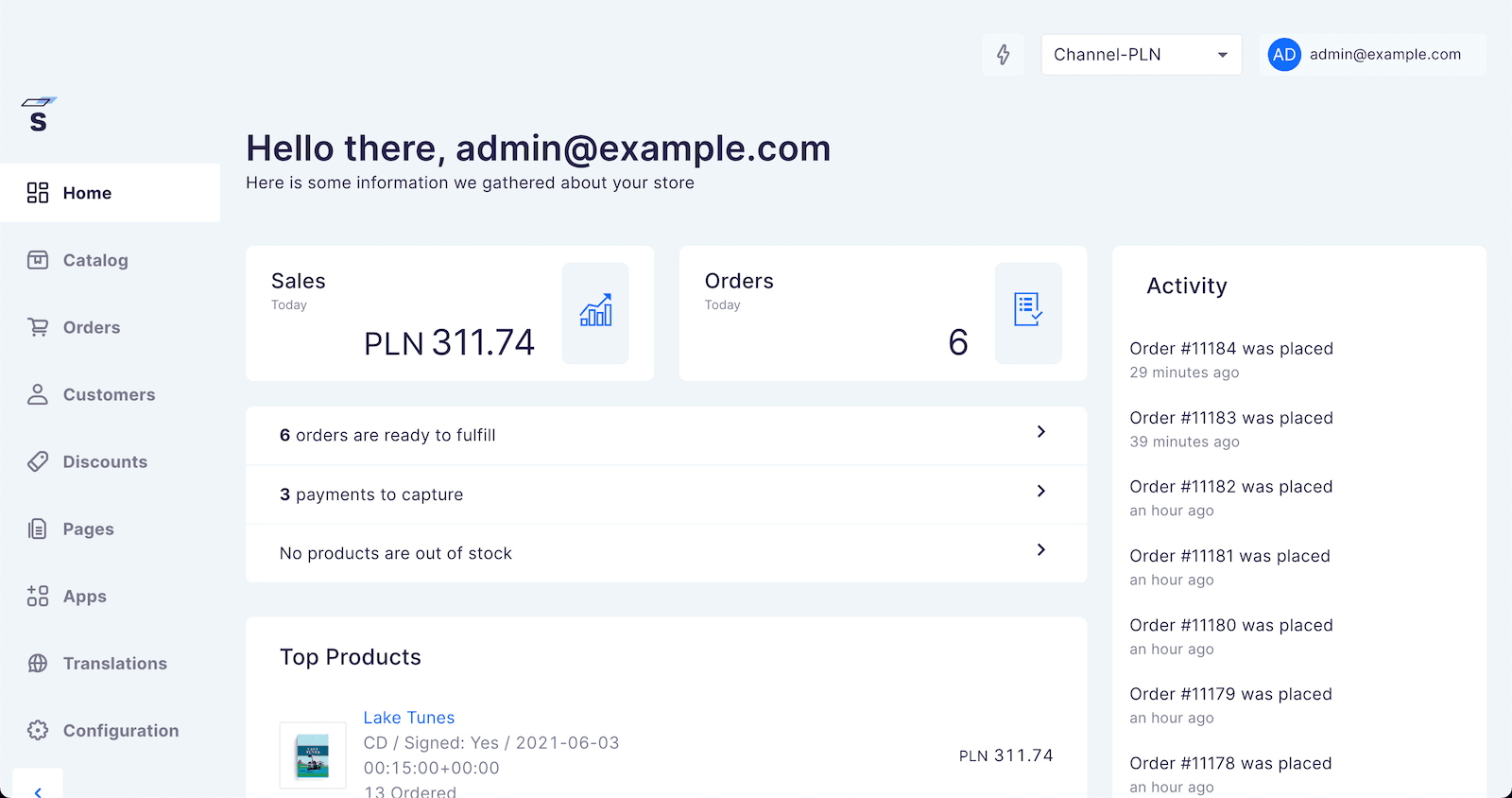Saleor Technology. What Is It and Why Is It Worth Getting Interested In?
By Jakub Zbąski
By Jakub Zbąski

Looking for an e-commerce system, you can come across many different solutions. Saleor stands out significantly among them. What is this solution and what are its advantages and disadvantages? We will answer these questions in today's post.
Saleor is a platform for creating online stores. It is characterized by a headless approach, which we wrote about in the previous post. Despite its relatively young age, it gathers a large group of fans thanks to its lightness and accessibility. Saleor is an open source solution, which means that using an online store based on Saleor technology is free. The only cost we incur is the cost of a server and a domain, which is an integral part of having any website on the internet. Saleor itself is based on the very popular Django framework created in Python. However, this is not a hindrance to connect external integrations created in other languages because Saleor uses modular extension, which we will explain further in the article.
We have already mentioned that Saleor is a modular solution. This means that each of its elements works separately, independently of the others.
The heart of Saleor is Saleor-core, which is a Django application that is the "brain" of our store - it connects and queries our database containing all the elements of the store, such as products, orders, customers, etc. Saleor-core is essential for the proper functioning of the entire online store. However, Saleor-core alone is not enough because without the store management panel and the visual layer of the store for the customer, we are not able to do much. The creators of Saleor come to our aid.
In addition to Saleor-core, we also get Saleor-dashboard. This is a modern customer panel created using the React framework. It allows us to interact with our store by logging into the admin panel and managing all aspects of the online store from there. We can add a new product, check the latest order, set up a new sales channel, connect an external integration, and much, much more. You can see what the admin panel looks like at https://demo.saleor.io/dashboard/

Well, now that we know how to manage the store and where all the logic of the store is located, we are missing the last piece of the puzzle - the visual layer of the online store for the customer. Here too, the creators of Saleor technology do not leave us alone.
React-storefront is the initial front-end, i.e., the visual layer of our online store. It is created using the Next.js technology, which is one of the best solutions for creating modern front-end applications available on the market. The Saleor storefront appearance is relatively neutral and delicate. This is intentional because the creators' assumption is to implement a fully functioning version of the online store from the beginning and then gradually modify the store's appearance to our needs, page by page. In practice, this means that we can start selling to customers from the first days of creating a Saleor technology online store project, continuously modifying and developing the platform to our needs. You can find the demo store version at: https://reactstorefront.vercel.app/channel-pln/en-US

All Saleor modules communicate using GraphQL technology. This is a very convenient solution that standardizes the way modules communicate with each other and provides as much data as we currently need. In practice, this means that the loading time of individual elements on the page or the execution of certain operations is very short.
Additionally, Saleor provides the ability to connect to any other external application using so-called webhooks, which are specific requests made after certain actions (for example, after placing an order, Saleor can automatically make a request to our external application responsible for generating InPost shipping labels). Saleor creators have gone a step further and created the ability to add applications in the management panel. This means that we can create our own analytics panel, for example, and have access to it from the online store's administrator panel.
The number of platforms for online sales on the market is really large, which is why to stand out from the competition, Saleor creators have taken care of many features available from the moment of setting up a Saleor online store. These include:
You can find the full list of features at https://saleor.io/core-features/
The main advantage of Saleor technology is its modern microservices architecture. It allows different elements of an online store to operate independently, providing limitless integration and development possibilities. Want to expand your store with a mobile application after a year of use? No problem, Saleor requires almost no modification for this. Modular design also means independence. There is nothing stopping a team of developers from working on a new product page design or adding AI-based product search while you add a new product collection at the same time.
Another positive aspect of Saleor is its lightness and simplicity in initial configuration. In fact, in the early stages of a new online store project in Saleor, you can replace the logo, adjust a few configuration settings, and your store can start earning revenue.
Another advantage of Saleor is its monthly fee, or rather lack thereof. Since it is an open-source solution, it is and always will be free. Additionally, the growing community supporting the project will help you solve any problems you encounter while using Saleor. This also means more new features with each subsequent version of Saleor. Exciting, isn't it?
However, like any solution, Saleor is not without its flaws. At the time of writing this article, the latest version of the project is 3.3+. It is a relatively young solution, so it may suffer from childhood diseases such as minor bugs that have not yet been resolved. This is not something that cannot be bypassed or fixed thanks to the increasingly larger community that is willing to share solutions and help.
We do see immense potential in Saleor technology at Rigby, despite its relatively young age, functionalities, and architecture that it proposes, its possibilities are truly impressive. The fact that Saleor was created from the beginning in a modular concept, definitely makes it a revolutionary solution compared to archaic or overloaded with functionalities systems such as Magento. We already have successful Saleor projects that are selling online. However, is this solution right for you? It depends.
If you plan to create an online store for the lowest possible price and do not plan to further develop or engage with the platform, Saleor is definitely not for you. In this case, there are much better solutions on the market, such as WooCommerce, which will quickly and relatively cheaply allow you to sell online.
If, however, you plan to build a sophisticated online store that will gradually expand with new functionalities and modifications to gradually increase sales, we definitely recommend Saleor. It is a solution for years that will grow with your business and expand to new markets.
More information about Saleor can be found at https://saleor.io/.
But how to implement maintenance mode in Next.js? Is it as easy as configuring a plugin on WordPress for a few minutes? Of course it is!
Magento, compared to Medusa, may lead to higher long-term costs due to its licensing model and the risk associated with the gradual decline in the popularity of the PHP language...